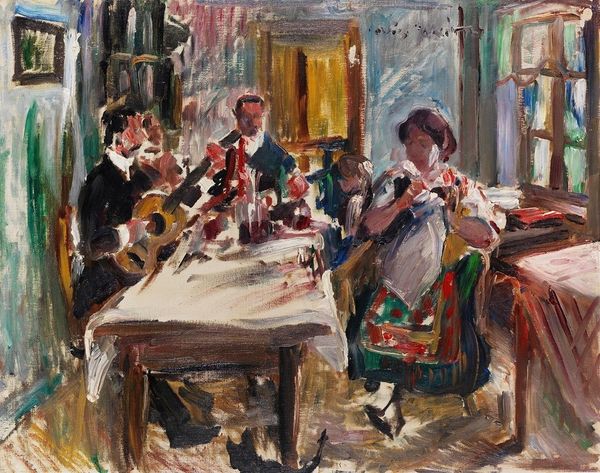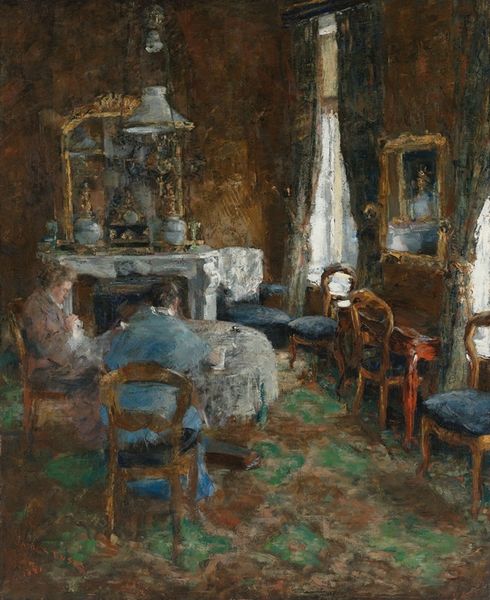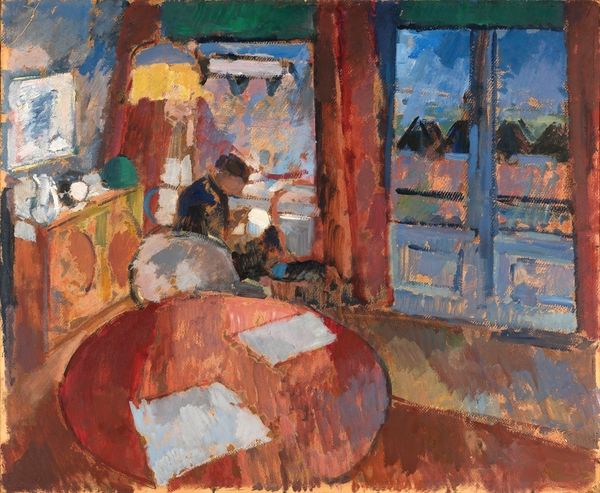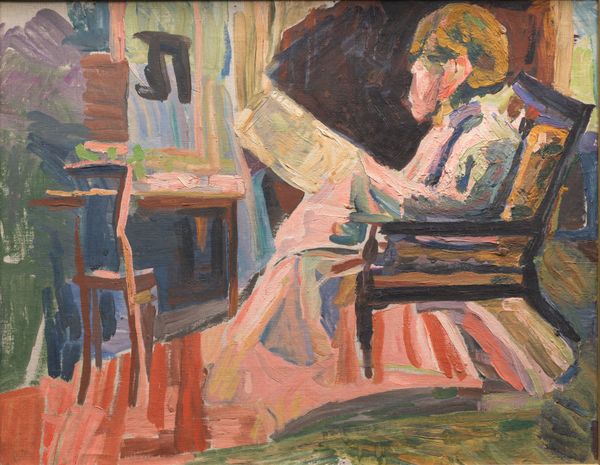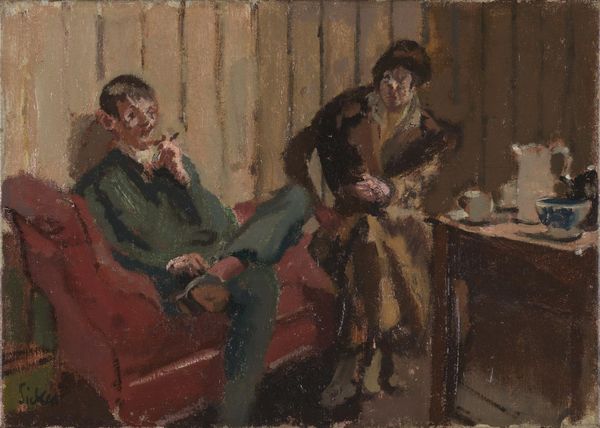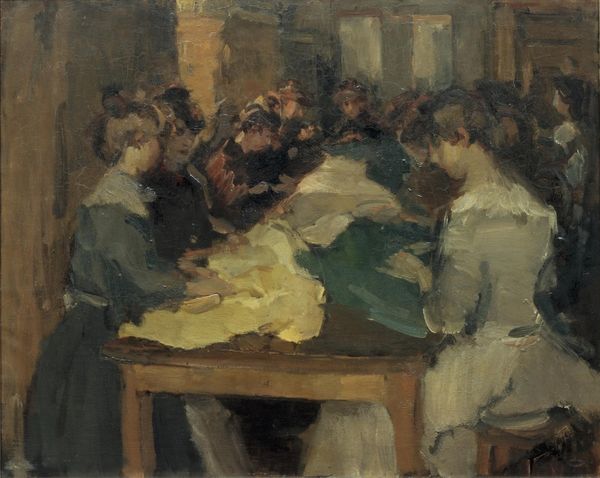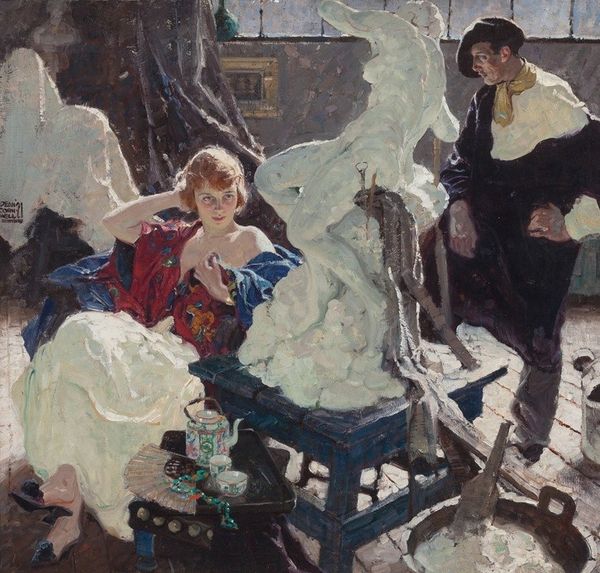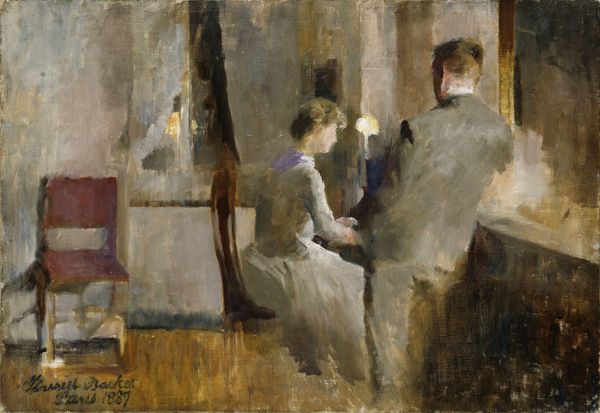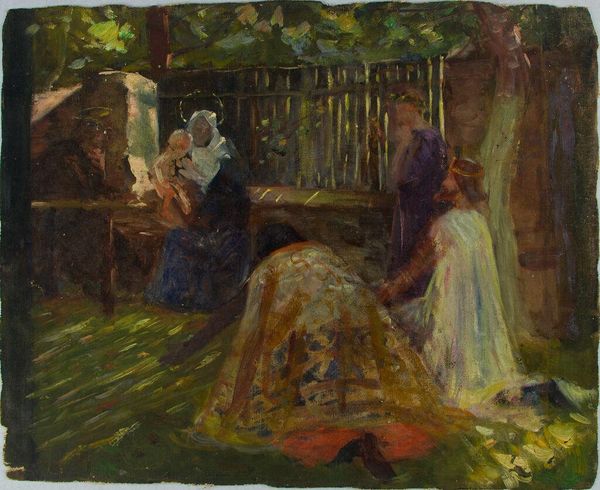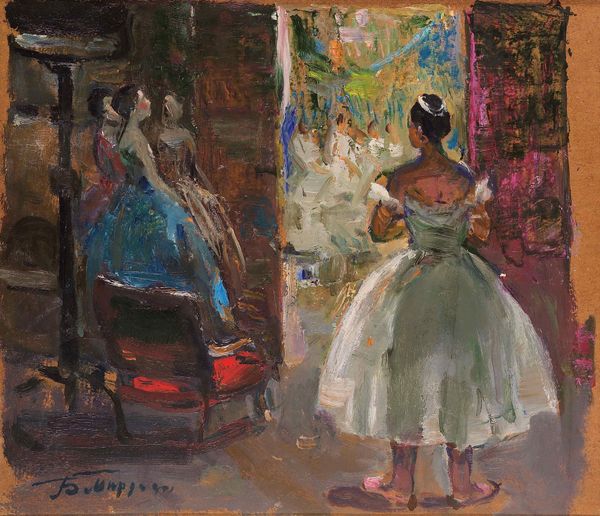
Copyright: Public domain
Editor: Here we have Harriet Backer’s “By the Piano” from 1894, painted with oils in a rather modern style, depicting what seems to be a group of people enjoying music in a parlor. It feels… intimate, yet distant, almost dreamlike. What do you see in this piece, especially concerning Backer's artistic approach? Curator: For me, this work sings of process and the quiet revolution in artistic production happening at the time. Look at the brushstrokes, how visible and deliberate they are. It is far from concealing the labor involved. It embraces the materiality of the paint itself. How does this open brushwork relate to notions of high art versus craft at this period? Editor: I guess… the focus shifts from the *subject* being depicted to *how* it's being depicted. Is it moving the piece towards craft by making it about the physical creation? Curator: Precisely. Consider the context: a growing bourgeois class with increasing access to art materials. Backer isn’t just depicting a scene; she's exploring the very means of its creation. The visible brushstrokes democratize the process, removing some of the mystique of artistic genius. What are your thoughts about Backer’s possible views about consumerism in the late 19th century based on these visual clues? Editor: That's fascinating. It seems that art isn’t only something to consume and passively view, but something to think critically about concerning its origins and social context, including the accessibility of materials and the production process. Curator: Exactly. Backer subtly challenges the hierarchy of art and craft. Seeing how Backer employed paint allows us to reconsider how we see art itself.
Comments
No comments
Be the first to comment and join the conversation on the ultimate creative platform.


